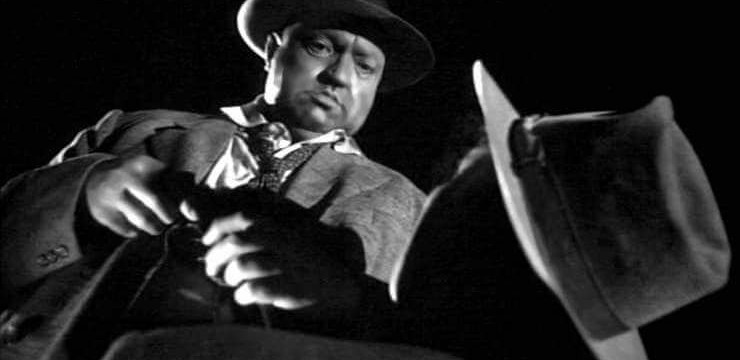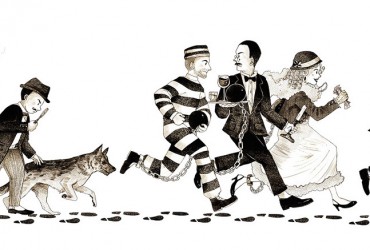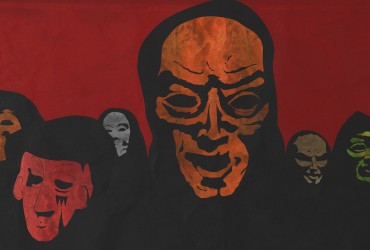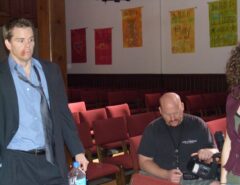“He was some kind of a man. What does it matter what you say about people?”
We wouldn’t know what shadows looked like, if it weren’t for film noir. Shadows of the human soul, especially.
There are better noir films than Touch of Evil, admittedly; films that thematically and aesthetically have defined the fabric of this genre in indelible ways, like Fritz Lang’s The Woman in the Window, Billy Wilder’s Double Indemnity, or Carol Reed’s The Third Man. Films that perhaps better represent the social and cultural dynamics that created this genre from the ashes, or that more explicitly embraced the moral ambiguity it often happily languished in. But is there a better last curtain call for the classic noir canon than Orson Welles’ tormented work of genius from 1958? Is there a more fitting finale and send-off for this genre than Marlene Dietrich’s last tribute to lousy cop Hank Quinlan?
Welles wasn’t even supposed to direct this loose adaptation of a Whit Masterson novel called Badge of Evil. Depending on whom you believe, it was either a ploy by Universal to lure in Charlton Heston (whose interest in the film would have been boosted, had the major contracted the Citizen Kane director at the helm instead of just enlisting him as an actor), or the result of a bet of sorts between Welles and producer Albert Zugsmith: they had a pile of B-movie scripts to choose from, as side dish to Harry Keller’s The Female Animal, a schmaltzy melodrama starring Hedy Lamarr. Could Welles get a masterpiece out of the worst script they could find?
A laborious challenge, if you will.
Despite wrapping up production on time, Welles had his work manhandled by Universal, and was pretty much ousted him from the editing room. The film released in theaters as a B-movie in a double-header was a skimpy, overly simplistic 93-minute rendition of the original, interwoven with additional scenes full of exposition (directed by the aforementioned “A-lister”, Keller) and in many ways betraying the director’s vision. Welles tried to negotiate a better cut with the major, sending them a notorious 58-page memo that echoed how much emotional investment he had in the film.
“I honestly believe it was – or would have been – one of the most striking things I’ve ever had anything to do with.”
But it would take until 1998, 40 years after the film’s release and 13 after Welles’ death, to see a sort of posthumous Director’s Cut that would give justice to what was arguably his second best work after the iconic 1941 debut he had become famous for. 1958’s Touch of Evil was undoubtedly a good film, but this new version feels a lot closer to Orson Welles the auteur than to the washed-up gun-for-hire director Universal might have envisioned him as back in the day.
Two scenes that exemplify that “evil” touch of his stand out in particular: the intoxicatingly tense long take at the beginning, and the quieter, tremendously poignant finale.
Lasting over three minutes made of a ballet-like high-crane tracking shot that follows a vehicle with a ticking bomb as it approaches the US-Mexico border, this is as good as any long take ever shot. And it’s not just because of the technical virtuosism: there’s an almost psychological element to the editing and the music, taking us along the literally explosive ride as if we were inside that car. In those legendary three and a half minutes, Welles manages to convey the decadence and moral ambiguity, the sense of impending doom and emotional detachment, the nihilism and beauty of the noir genre with nary an important line of dialogue.
Immersed in the seedy, sleazy and corrupt world that surround him, Welles’ portrayal of Hank Quinlan is riveting not so much because of the shades of grey the script afforded him, but because of the pathos he injects into the character. He and Dietrich, much less radiant but ironically more striking than leads Charlton Heston and Janet Leigh, give life to the shadows that inhabit the film like an invisible character – in a rather explicit manner the cop, and much subtler ways the lady.
That finale, almost an early premonition of what would become of Welles’ career, is the perfect symbol for the end of an era. Classic noir would give way to a thematic offspring like the neo-noir, and would never be the same. Arguably even Welles suffered the same fate, unable in his later years to regain the artistic verve of his more illustrious, mindbendingly creative previous 20 years of cinematic service.
He was some kind of a man, indeed. But it does matter that his vision can now be appreciated in all its evil touches.
TOUCH OF EVIL
A film by Orson Welles
Starring Orson Welles, Janet Leigh, Charlton Heston, Marlene Dietrich, Zsa Zsa Gabor
Screenplay by Orson Welles (based upon Whit Matterson’s Badge of Evil)
Produced by Universal
PREVIOUSLY ON FILM NOIR OF THE WEEK
- Odd Man Out [1947, Carol Reed]
- The Woman in the Window [1944, Fritz Lang]
- Double Indemnity [1944, Billy Wilder]
Want to know more about what we do? Sign up to learn more about our process, our projects, and upcoming premieres.
 Follow this developing story through our social media on Twitter, Facebook, Google+, Pinterest, Tumblr, Instagram, Goodreads.
Follow this developing story through our social media on Twitter, Facebook, Google+, Pinterest, Tumblr, Instagram, Goodreads.







Leave a Reply